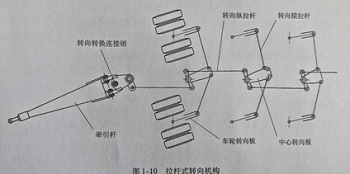
Privacy statement: Your privacy is very important to Us. Our company promises not to disclose your personal information to any external company with out your explicit permission.
In the field of large-scale transportation, in order to meet the bearing capacity requirements of roads and bridges, it is often necessary to use a very long vehicle body and many tires to distribute the load, and to maintain the same force on each wheel during driving. With the development of modern hydraulic technology, large-scale transport vehicles begin to use hydraulic flatbed trailers, or add some components based on hydraulic flatbed trailers to form other forms of vehicle groups.
Taking many independent suspensions with built-in hydraulic cylinders as the basic bearing unit, the hydraulic cylinders of each suspension are connected by hydraulic pipelines, so that the overweight cargo load is evenly distributed to each trailer tire. This method of hydraulically balancing the forces of each suspension The hydraulic flatbed trailer has the characteristics of low cargo platform, small self-weight and large carrying capacity. The hydraulic flatbed trailer is also manufactured into a modular structure, which is composed of trailers with a smaller number of axles. Each module can be spliced longitudinally or laterally to form trailers with different lengths and widths to adapt to different quality and size of goods, and at the same time. It also meets the requirements of different bearing capacities of roads and bridges.
According to the different driving modes and steering modes, hydraulic flatbed trailers can be divided into several basic forms such as towed full-trailer units, towed semi-trailer units, self-propelled units, and azimuth self-propelled units.
The function of the trailer steering system is to ensure that all wheels are in a pure rolling state during the turning process, and no lateral slip occurs. To this end, it must be satisfied that at each turning moment, the axle extension lines of all wheels intersect at a point (as shown in the figure below), which is the instantaneous steering center.

For trailers with an odd number of axles, the suspension of the longitudinal center axis often does not turn during the turning process, as shown in a) above, and it is customary to call this axis the locking axle. For a trailer with an even number of axles, all wheels are often turned. As shown in Figure b) above, the longitudinal center of the trailer is exactly the axis of symmetry of the steering angle of the front and rear suspensions, that is, it can be imagined as a locking axis. The extension of the locking shaft must pass through the instantaneous turning center.

In order to ensure that each wheel is steered according to the steering law, non-azimuth trailers basically use a mechanical pull-rod steering drive mechanism. As shown in the figure above, it is a typical steering drive structure with a steering plate in the middle, which consists of a steering longitudinal tie rod center steering plate, a steering tie rod, and a wheel steering plate (fixed on the suspension). Among them, two adjacent center The steering plate constitutes a four-bar linkage, and the center steering plate and the wheel steering plate constitute a four-bar linkage. Multiple steering rod holes are often made on the center steering plate, which can correspond to the steering connection of the trailer under different axle counts.

When the number of trailer axles is large, the steering systems at the front and rear of the trailer are often connected hydraulically. The above figure shows a typical hydraulic connection. The principle is: when the front of the trailer turns to the right, the rear oil chamber of the front steering hydraulic cylinder A is compressed, and the hydraulic oil is pumped out and pushes the steering hydraulic cylinder C at the rear of the trailer to act, realizing the direction of the steering system at the rear of the trailer. Left equal-angle steering; when the front of the trailer turns to the left, the rear oil chamber of the front steering hydraulic cylinder B is compressed, and the hydraulic oil is pumped out and pushes the steering hydraulic cylinder D to act, realizing the right angle of the rear steering system of the trailer. turn. In this way, the requirement of the same instantaneous steering center of the front and rear trailers can be met.

For the towed vehicle group, the steering driving mode of the trailer can be driven by the drawbar or by the hydraulic cylinder. By loosening and screwing in the steering conversion connecting pin (Figure 3), the drawbar can The separation and combination of the steering pull rod system are used to convert the two steering modes. When driving normally on the road, the traction rod is often used to drive the steering mode. At this time, the trailer automatically follows the driving track of the tractor, which can maintain the stability and safety of the trailer steering at high speed. When encountering a sharp curve on the road or needing to reverse, the steering conversion connecting pin can be released, and the hydraulic power machine can be started at the same time. In addition, the trailer driver is arranged to control the steering control hydraulic valve, and the hydraulic drive method is adopted to enable the trailer to independently determine its wheel track within a certain range. for the best cornering ability.
LET'S GET IN TOUCH

Privacy statement: Your privacy is very important to Us. Our company promises not to disclose your personal information to any external company with out your explicit permission.

Fill in more information so that we can get in touch with you faster
Privacy statement: Your privacy is very important to Us. Our company promises not to disclose your personal information to any external company with out your explicit permission.